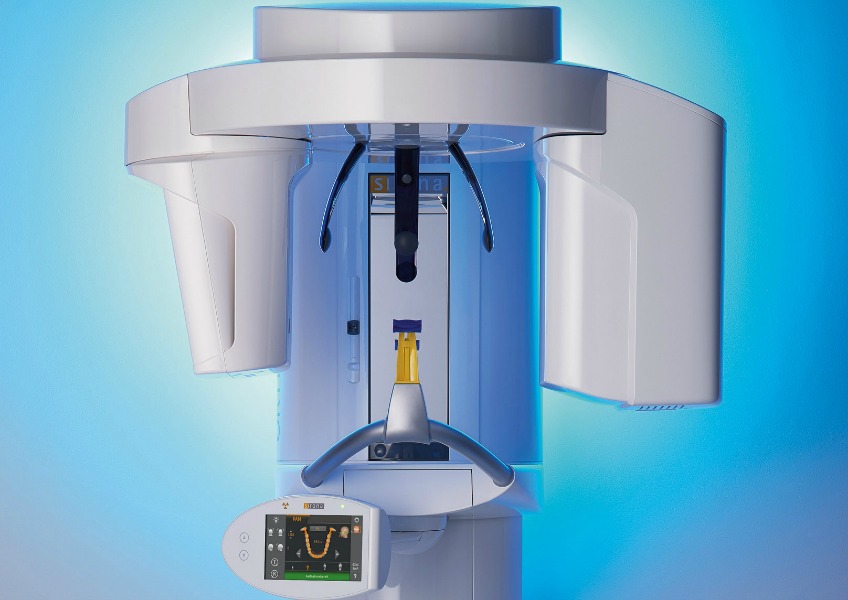The diagnosis phase is very important in the patient’s therapeutic process. The exact identification of the problem allows us to develop the best treatment plan and, above all, to avoid wasting time in ineffective therapies. This is why at the Dental Office Dr. Schmitz we use the best equipment on the market, which in addition to allowing high-precision diagnosis, is also less invasive than standard equipment.
3D Cone Beam: What is it?
In particular, we rely on Cone Beam 3D, a latest-generation radiographic system, among the most sophisticated, which has revolutionized the dental radiological diagnosis. This technique uses a cone-shaped beam of rays, which allows first of all to acquire a large volume and provide a more precise result. Not only that, the real advantage lies in the strong reduction in the radiation dose to which the patient is exposed, compared to traditional CT scans. The Cone Beam system, in particular, allows a reduction of radiations of about 50 times compared to a classic Dental Scan.
The 3D Cone Beam is used in the study and analysis of the facial area, in particular of the dental arches. This instrument is therefore very important in the evaluation of the qualitative and quantitative characteristics of the bone, in order to effectively plan eventual dental implantology interventions. The examination is performed in the same way as a traditional orthopanoramic examination and does not last more than a few seconds.
Benefits and uses of 3D Cone Beam
The 3D Cone Beam system provides a much more precise and accurate diagnosis and is an indispensable tool in modern dentistry as it allows the correct evaluation of parameters that are very useful in the preparation of surgical procedures and orthodontic therapies. Normally the Cone Beam is used
in case of extraction of included teeth;
in implantology to evaluate exactly quality and quantity of available bone;
in orthodontics to identify included, ectopic, supernumerary dental elements;
in the diagnosis of oral tumors, to define their extension and the impairment of vital elements.

